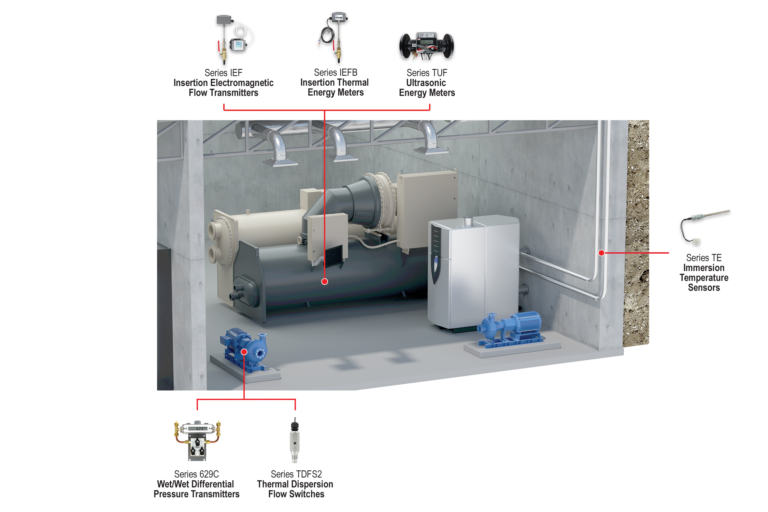
Back-To-School with Dwyer Instruments: School Monitoring Solutions
Indoor air quality is important in schools to boost students’ well-being. Also important to the school building is ensuring that the building is energy efficient – the costs saved by reducing energy consumption can be used to further improve school facilities and enhance students’ learning environments.
With a wide selection of monitoring solutions, Dwyer products can provide valuable insight into energy consumption. Understanding a school’s energy usage can help manage the building’s performance and identify where energy savings could be improved; ultimately leading to cost saving opportunities and minimized operating disruptions.
The mechanical room is the heart of a school building and is therefore where some of the most important monitoring takes place. To keep air handlers, boilers, chillers, heat exchangers, water heaters, tanks, pumps, and backup generators not only running, but running well, it is necessary to monitor them closely with accurate and reliable sensor solutions.
Dwyer Instruments offers several product offerings for monitoring parameters within mechanical rooms, including: energy, flow, pressure, and temperature.
Energy
Measuring the thermal units (BTUs) within the school building will allow for a better understanding of a system’s energy intake.
If you are installing a thermal energy meter in a new system or are able to shut down your line for installation, consider an inline ultrasonic energy meter, such as Dwyer’s Series TUF. The TUF is accurate, stable, and has serial communication outputs for easy transfer of data.
Dwyer’s Series IEFB is a highly accurate insertion thermal energy meter that can easily be inserted into a pipe (via a hot-tap valve) without shutting down a line, saving on installation time and cost. The IEFB does not have any moving parts to wear or break, thus increasing the overall lifespan of the unit and reducing maintenance costs. All three system components (flowmeter, temperature sensors, and calculator) are calibrated together, leading to improved measurement accuracy.
Flow
Having an understanding of equipment flow rates allows users to maintain energy reduction where needed. A decrease in flow may signal maintenance concerns due to a clog or jam.
The IEF insertion electromagnetic flow transmitter is NSF certified with a NEMA 6P (IP68) rating. Like the IEFB mentioned above, it is hot-tap valve capable, so the transmitter can be installed or maintained without shutting down the entire system. Standard accuracy units fit pipe sizes from 4 to 36” and are easily installed via a field configurable display.
The Series TDFS2 is a thermal flow switch that indicates whether the flow rate is above or below a user set flow rate with NO and NC contacts. Set point is easily field set; just put the included magnet to the set point target at the desired flow rate and it’s done.
Pressure
A change in pressure may indicate when maintenance is required for leaks or pipe blockages.
The Series 629C wet/wet differential pressure transmitter monitors differential pressure of liquids, utilizing dual pressure sensors making it less susceptible to overpressure failures. The 629C transmitter can be factory equipped with a 3-way valve manifold, allowing for isolation of the transmitter from the process loop and easy venting and equalizing when installed.
Temperature
Monitoring the temperature before and after a process allows users to identify heat exchanges and excessive energy use.
Dwyer offers an array of thermistor or RTD temperature sensors to fit various applications. By measuring the temperature in ventilation systems, condensers, and outdoor environments, it’s possible to adjust the system accordingly to ensure both optimal comfort and energy savings. The Series TE sensors offer flexible setup with low cost and easy installation.
If you have any questions, our Sales & Application Engineers and Dwyer Experts are available to assist by phone at (219) 879-8000 x6402, or by email at tech@dwyermail.com.
Source: https://blog.dwyer-inst.com/2023/05/16/school-energy-monitoring-solutions/
